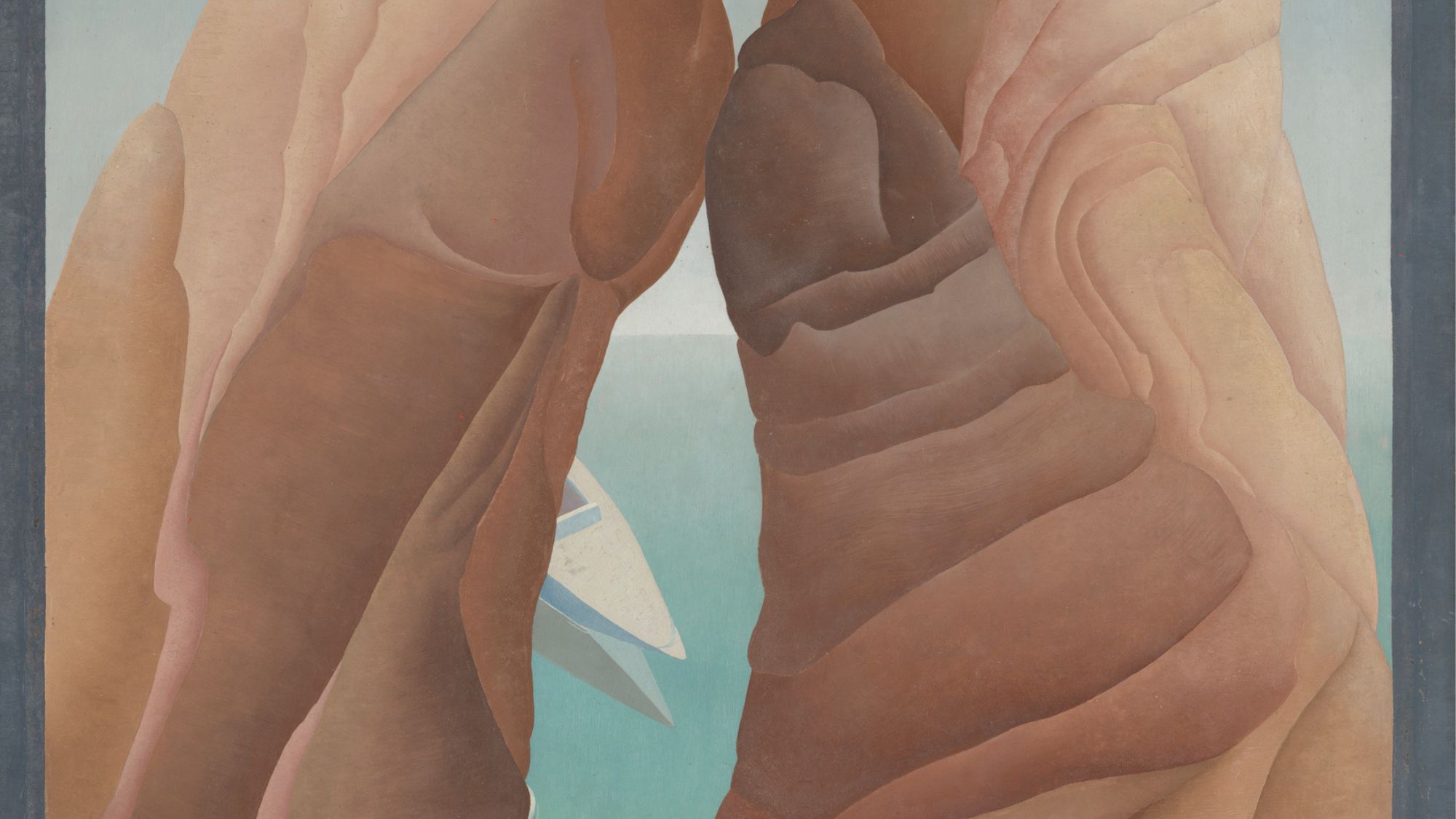Ithell Colquhoun: an 'outlandish' exhibition
Tate Britain's 'impactful' and 'expansive' collection features 150 artworks from throughout the artist's career

Ithell Colquhoun was an artist who "didn't sit still, visually or spiritually", said Phin Jennings in Time Out. Born in India, where her father worked as a colonial administrator, Colquhoun (1906-1988) moved to England as a child and studied painting at the Slade, where she was introduced to the "esoteric" beliefs that would shape both her life and her art.
Across her "sprawling oeuvre", Colquhoun experimented with a "wide gamut of spiritual, religious and formal ideas": she is generally associated with surrealism, but she also explored eroticism, the occult, Hindu Tantra, Christian mysticism and the Jewish Kabbalah to realise her bizarre pictorial visions. (Late in life she was ordained as a priestess of Isis.) Yet, her eye for composition remained "a constant", as did her talent for painting strange, often unsettling images.
This exhibition is a smaller version of a previous, "expansive" retrospective in St Ives, where she spent much of her life; but it still features 150 paintings and drawings, spanning Colquhoun's whole career. It is a wildly uneven experience – yet it contains many "impactful" moments, and provides a compelling introduction to her weird, wonderful world.
The Week
Escape your echo chamber. Get the facts behind the news, plus analysis from multiple perspectives.

Sign up for The Week's Free Newsletters
From our morning news briefing to a weekly Good News Newsletter, get the best of The Week delivered directly to your inbox.
From our morning news briefing to a weekly Good News Newsletter, get the best of The Week delivered directly to your inbox.
The show takes Colquhoun's "obsession" with the occult seriously, said Alastair Sooke in The Daily Telegraph. It devotes much space to her designs for tarot cards, with wall texts going to great lengths to explain some of the "impenetrable" beliefs she harboured. At their best, the paintings have "a flaming, dream-like intensity". A case in point is the Salvador Dalí-inspired "Dance of the Nine Opals" (1942), in which "a ring of opalescent rocks" appears to revolve around "a golden tree of life before pink-tinged mountains".
Yet beyond the woo-woo wackiness, Colquhoun never really developed "a distinctive visual language" of her own, said Mark Hudson in The Independent. And some of what we see just isn't much good. "Attributes of the Moon" (1947), for instance, shows "a fantastical figure standing in a flesh-like cave"; it manages to evoke everything from pagan lore to the Virgin Mary, but still ends up looking like "a piece of clunky sci-fi illustration".
Colquhoun created some undeniably "dubious" paintings, said Laura Cumming in The Observer. "But the wildest works stand right out." Her most famous painting, 1938's "Scylla", is a bizarre "double take", in which you could be looking at a view of the sea between two coastal cliffs, or at "a submerged female body" (it was inspired by the sight of her legs in the bath). Better still are those to do with "bodily union". "Androgyne" (1941), in which two figures entwine to become four, is "startling and radiant". And best of all are the "Blakeian" "Diagrams of Love" (c.1940): "a winged blue figure flies up from a red chalice... eyes become breasts become flames become hearts". Uneven as Colquhoun was, this "outlandish" exhibition certainly has its moments.
A free daily email with the biggest news stories of the day – and the best features from TheWeek.com
-
 A running list of the US government figures Donald Trump has pardoned
A running list of the US government figures Donald Trump has pardonedin depth Clearing the slate for his favorite elected officials
-
 Ski town strikers fight rising cost of living
Ski town strikers fight rising cost of livingThe Explainer Telluride is the latest ski resort experiencing an instructor strike
-
 ‘Space is one of the few areas of bipartisan agreement in Washington’
‘Space is one of the few areas of bipartisan agreement in Washington’Instant Opinion Opinion, comment and editorials of the day
-
 The ultimate films of 2025 by genre
The ultimate films of 2025 by genreThe Week Recommends From comedies to thrillers, documentaries to animations, 2025 featured some unforgettable film moments
-
 Into the Woods: a ‘hypnotic’ production
Into the Woods: a ‘hypnotic’ productionThe Week Recommends Jordan Fein’s revival of the much-loved Stephen Sondheim musical is ‘sharp, propulsive and often very funny’
-
 The best food books of 2025
The best food books of 2025The Week Recommends From mouthwatering recipes to insightful essays, these colourful books will both inspire and entertain
-
 Art that made the news in 2025
Art that made the news in 2025The Explainer From a short-lived Banksy mural to an Egyptian statue dating back three millennia
-
 Nine best TV shows of the year
Nine best TV shows of the yearThe Week Recommends From Adolescence to Amandaland
-
 Winter holidays in the snow and sun
Winter holidays in the snow and sunThe Week Recommends Escape the dark, cold days with the perfect getaway
-
 The best homes of the year
The best homes of the yearFeature Featuring a former helicopter engine repair workshop in Washington, D.C. and high-rise living in San Francisco
-
 Critics’ choice: The year’s top 10 movies
Critics’ choice: The year’s top 10 moviesFeature ‘One Battle After Another’ and ‘It Was Just an Accident’ stand out